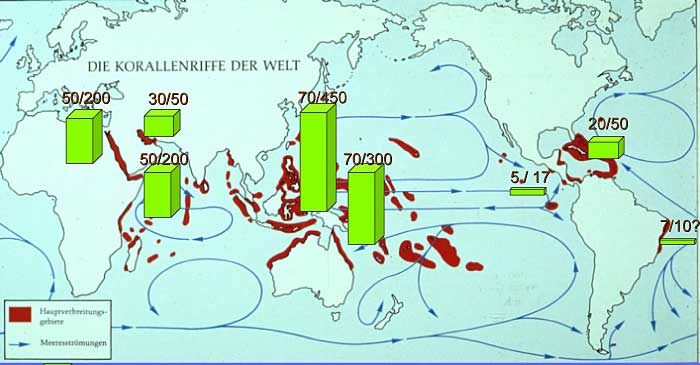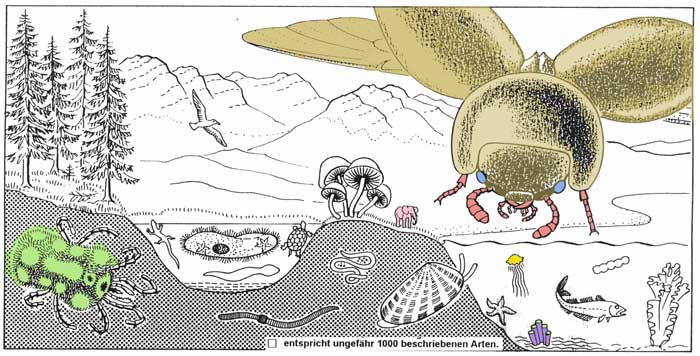Some figures for comparison:
Tab 1: Exampes for species numbers (after Consortium Systematics Agenda 2000, Veron 1995 and others):
| known species | estimated species number | |
| viruses | 5.000 | ca. 500.000 |
| bacteria | 4.000 | 400.000 – 3 millions |
| funghi | 70.000 | 1 – 1.5 millions |
| protista | 40.000 | 100.000 – 200.000 |
| algae | 40.000 | 200.000 – 10 millions |
| plants | 250.000 | 300.000 – 500.000 |
| vertebrates | 45.000 | 50.000 |
| round worms | 15.000 | 500.000 – 1 million |
| mollusks | 70.000 | 200.000 |
| crustaceans | 40.000 | 150.000 |
| chelicerata | 75.000 | 750.000 – 1 million |
| insects | 950.000 | 8 – 100 millions |
| reef organisms (all groups) |
60.000
|
> 1 million |
all known genera of scleractinian corals (Triassic to modern): ca. 1800
all known genera of tabulate / rugose corals (paleozoic): ca. 280 (Tabulata) + 800 (Rugosa), + some other groups
Known stone corals (genera/species):
pacific (from W to E): Galapagos: 5 / 17; Great Barrier Reef 70 / 300; Indonesian Archipelago 70 / 450, Maldives 50 / 200, Persian Gulf 30/50, Red Sea 50 / 200.
Atlantic: Caribbean 20/50; Brasil 7 / 10?

Red: modern tropical coral reef domains.
green: coral diversities (genera/species)
Map from Wells & Hanna 1992, Data largely from Veron (1995)
see also biogeographic maps in Veron 1995

